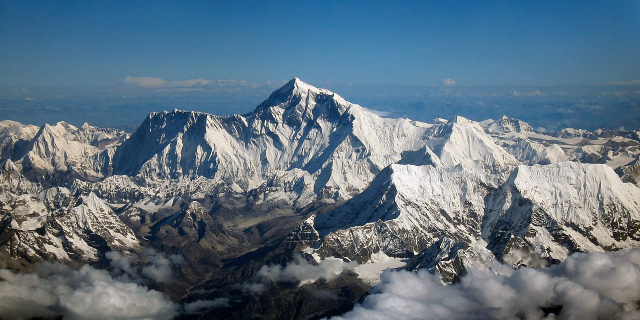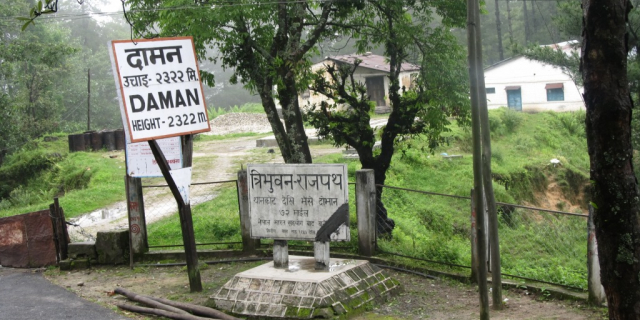Swayambhunath (Devanagari: स्वयम्भू स्तूप; Nepal Bhasa: स्वयंभू; sometimes Swayambu or Swoyambhu) is an ancient religious complex atop a hill in the Kathmandu Valley, west of Kathmandu city. The Tibetan name for the site means 'Sublime Trees' (Wylie: Phags.pa Shing.kun), for the many varieties of trees found on the hill. However, Shingun may be of in Nepal Bhasa name for the complex, Swayambhu, meaning 'self-sprung'. For the Buddhist Newars, in whose mythological history and origin myth as well as day-to-day religious practice Swayambhu occupies a central position, it is probably the most sacred among Buddhist pilgrimage sites. For Tibetans and followers of Tibetan Buddhism, it is second only to Boudha. Swayambhu is the Hindu name.
The complex consists of a stupa, a variety of shrines and temples, some dating back to the Licchavi period. A Tibetan monastery, museum and library are more recent additions. The stupa has Buddha's eyes an...Read more
Swayambhunath (Devanagari: स्वयम्भू स्तूप; Nepal Bhasa: स्वयंभू; sometimes Swayambu or Swoyambhu) is an ancient religious complex atop a hill in the Kathmandu Valley, west of Kathmandu city. The Tibetan name for the site means 'Sublime Trees' (Wylie: Phags.pa Shing.kun), for the many varieties of trees found on the hill. However, Shingun may be of in Nepal Bhasa name for the complex, Swayambhu, meaning 'self-sprung'. For the Buddhist Newars, in whose mythological history and origin myth as well as day-to-day religious practice Swayambhu occupies a central position, it is probably the most sacred among Buddhist pilgrimage sites. For Tibetans and followers of Tibetan Buddhism, it is second only to Boudha. Swayambhu is the Hindu name.
The complex consists of a stupa, a variety of shrines and temples, some dating back to the Licchavi period. A Tibetan monastery, museum and library are more recent additions. The stupa has Buddha's eyes and eyebrows painted on. Between them, the number one (in Nepal script) is painted in the fashion of a nose. There are also shops, restaurants and hostels. The site has two access points: a long staircase leading directly to the main platform of the temple, which is from the top of the hill to the east; and a car road around the hill from the south leading to the south-west entrance. The first sight on reaching the top of the stairway is the Vajra. Tsultrim Allione describes the experience:
We were breathless and sweating as we stumbled up the last steep steps and practically fell upon the biggest vajra (thunderbolt scepter) that I have ever seen. Behind this Vajra was the vast, round, white dome of the stupa, like a full solid skirt, at the top of which were two giant Buddha eyes wisely looking out over the peaceful valley which was just beginning to come alive.
Much of Swayambhu's iconography comes from the Vajrayana tradition of Newar Buddhism. However, the complex is an important site for Buddhists of many schools, and is also revered by Hindus.
Swayambhu is among the oldest religious sites in Nepal. According to the Gopālarājavaṃśāvalī, it was founded by the great-grandfather of King Mānadeva (464–505 CE), King Vṛsadeva, about the beginning of the fifth century CE. This seems to be confirmed by a damaged stone inscription found at the site, which indicates that King Vrsadeva ordered work done in 640 CE.[1]
However, Emperor Ashoka is said to have visited the site in the third century BCE and built a temple on the hill which was later destroyed.
Although the site is considered Buddhist, the place is revered by both Buddhists and Hindus. Numerous Hindu monarch followers are known to have paid their homage to the temple, including Pratap Malla, the powerful king of Kathmandu, who is responsible for the construction of the eastern stairway in the seventeenth century.[2]
The stupa was completely renovated in May 2010, its first major renovation since 1921[3][4] and its 15th in the nearly 1,500 years since it was built. The Swayambhu Shrine was re-gilded using 20 kg of gold. The renovation was funded by the Tibetan Nyingma Meditation Center of California, and began in June 2008.[5]
At around 5 a.m. on 14 February 2011, Pratapur Temple in the Swayambhu Monument Zone suffered damage from a lightning strike during a sudden thunderstorm.[6]
The Swayambunath complex suffered damage in the April 2015 Nepal earthquake.[7]
































Add new comment